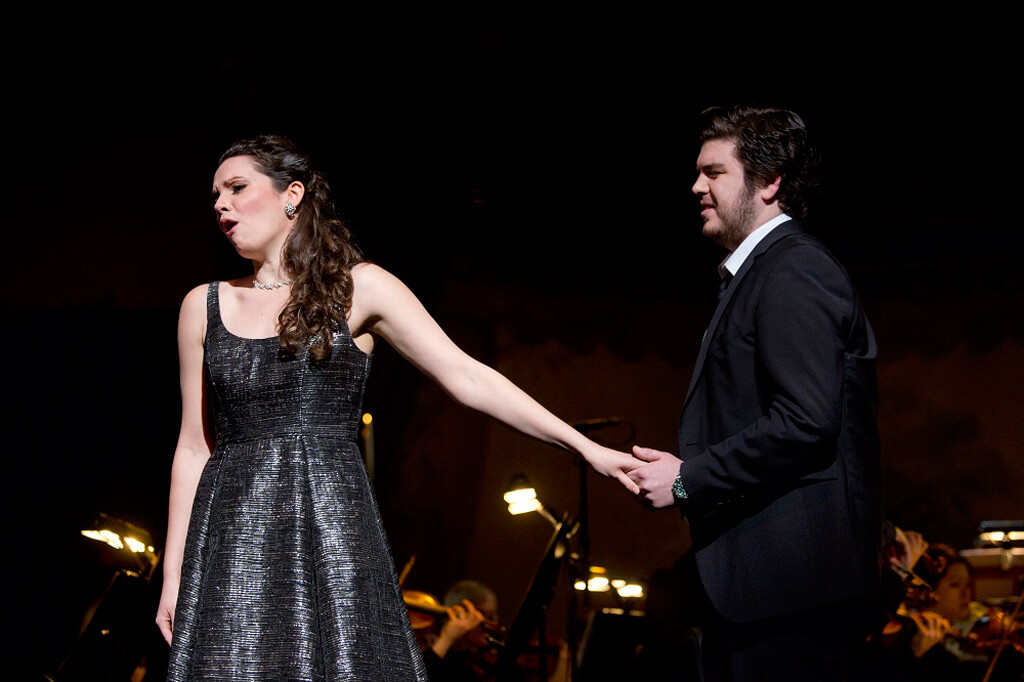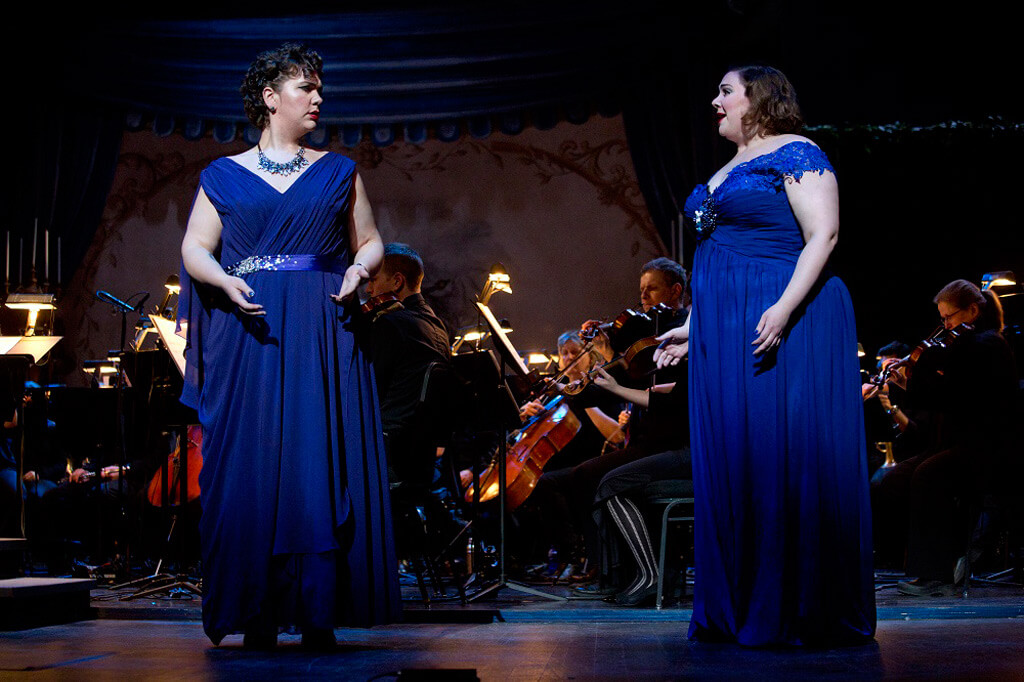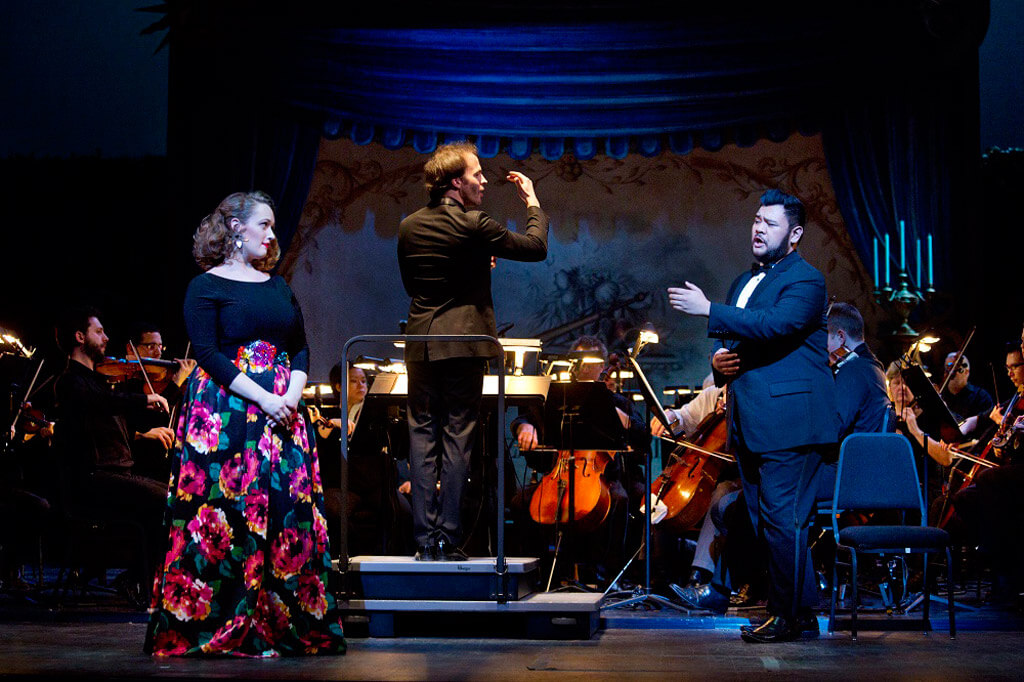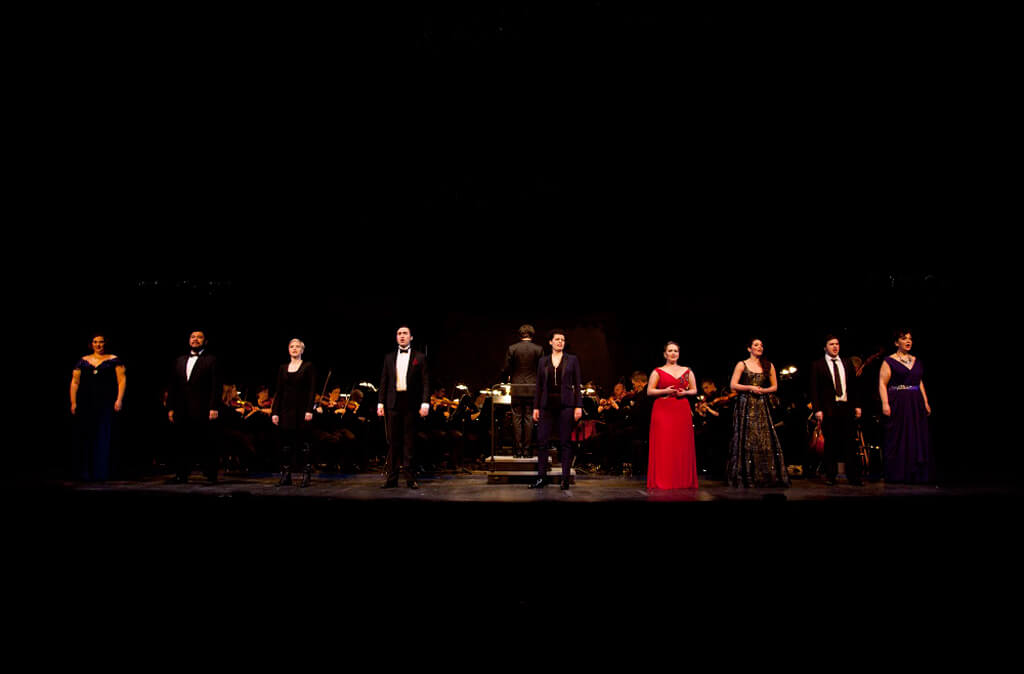
For the past few seasons, opera fans have been treated to an annual COC Ensemble Studio performance of a mainstage opera, almost always usually around this time of year. From the principals on down to the comprimario roles, young artists get to show what they can do. In addition to the current Ensemble Studio members, select former members are invited back to fill certain roles, plus the occasional guest not connected with the Ensemble. I recall with pleasure several memorable performances in the past, most notably Die Zauberflöte, Idomeneo, and last season’s Le nozze di Figaro. All Mozart operas, not a surprise as it’s often said that Mozart is ideal for young voices. Many of the Ensemble artists in these shows have gone on to make their mark in the world of opera.
It came as a bit of a disappointment that the mainstage complete opera has been replaced with an “Ensemble Showcase.” It’s not clear why the change of format this year, but one can speculate, from the cost of a full performance to the possibility of it cutting into sales of the “regular” shows given its lower ticket prices. Having seen last evening’s showcase, it’s clear that something can be said for this new format. For one thing, instead of being limited to a single opera, we have a sampling, in this case, three — La finta giardiniera, Ariodante, and Norma.

These operas of contrasting styles offer the opportunity to showcase different voice types in the Ensemble at any given time. For example, the big-voiced soprano Samantha Pickett and mezzo Megan Quick wouldn’t fit too well in Mozart and Handel. With scenes and arias from different operas, everyone is accommodated. I came away from the show really impressed with the wealth of Canadian talent.
With the set of The Magic Flute serving as the background and the COC Orchestra on stage, the show began with the Overture and Act One of a comparative Mozart rarity, La finta giardiniera. Composed when he was only 18, it understandably lacks the maturity that so characterizes his later works. That said, you can feel the enormous potential, particularly snippets in the ensemble numbers that bear the seeds of his later works, particularly Nozze. All the characters are finely drawn, and the plot has the trademark comic twists and turns. Five singers made a very strong impression in this segment. Danika Loren (Sandrina) sang with crystalline tone, well partnered by the warm, ingratiating tenor of Charles Sy as Don Anchise. Mezzo Lauren Eberwein with her cool timbre was perfectly cast in the trouser role of Ramiro. Former Ensemble soprano Mireille Asselin made a welcome return as a very pert and funny Serpetta. Together with baritone Bruno Roy (Nardo), they were hilarious, acting up a storm.

This was followed by “Mira, O Norma” from Act Two of Norma. It’s not every day that one finds this fiendishly difficult Bellini in a young artist showcase, but the COC has two big voices, soprano Samantha Pickett and mezzo Megan Quick, capable of tackling this challenging repertoire. Pickett has a dark-hued timbre that points to the spinto and maybe eventually dramatic soprano fach. Quick has a huge low mezzo, which I heard in an impressive Das Lied von der Erde two years ago. In this extended scene, Pickett showed off a surfeit of temperament and power, just a bit short on a truly seamless legato and an ideal evenness of tone in the coloratura runs. Adalgisa is sometimes sung by sopranos, but Quick coped very well, making an imposing sound all the way up to the top. Big voices are notoriously difficult to control, but these two artists, while still in the beginning of their careers, are already well on their way. The audience gave them the loudest ovations of the evening.

The concert ended with almost the whole of Act 3 of Ariodante, led by mezzo Emily D’Angelo in a stunning vocal and dramatic display as Ariodante. Still in her early twenties, it’s astounding that she is already the complete artist, possessing beauty of tone, dramatic acuity, patrician stage presence, and communicative power. She is well matched by soprano Danika Loren as a totally convincing, pure-toned Ginevra, offering up exemplary agility. Mireille Asselin took on Dalinda, a role ideally suited to her voice and temperament. Bruno Roy was a sympathetic King of Scotland and father of Ginevra. And I mustn’t forget the excellent work on the harpsichord by Ensemble pianists Stephane Mayer and Hyejin Kwon. Johannes Debus drew crisp and effervescent Baroque sound from the COC forces for the Handel and classical elegance for the Mozart. All in all, a most enjoyable two-hour worth of music, showcasing the wealth of talent we have in Canada.



